Charlotte Perriand’s life and work explored at London’s Design Museum
London’s Design Museum presents ‘Charlotte Perriand: The Modern Life’, an exhibition turned the spotlight on one of the most iconic creators of the 20th century
Felix Speller - Photography
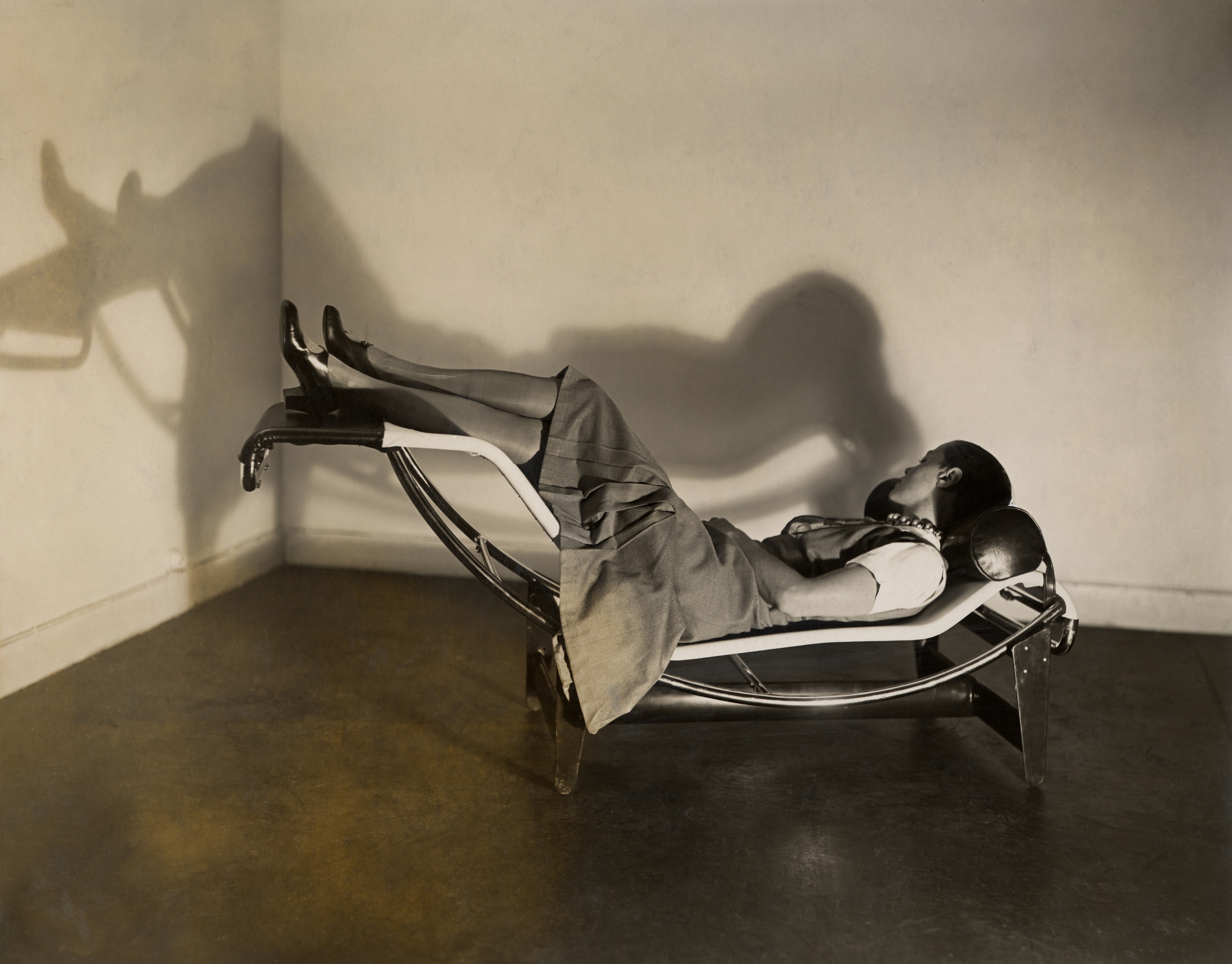
The Design Museum's ‘Charlotte Perriand: The Modern Life’ showcased the work and ideas of the French architect and designer through a series of thematic displays, presenting her creative process with an impressive series of sketches, photographs, notebooks, as well as furniture design prototypes, final pieces and faithful reconstructions of some of her most famous interiors.
‘Charlotte Perriand: The Modern Life’ at the Design Museum

Place Saint-Sulpice apartment-studio room recreation with the ‘Table extensible’ (Extendable table), 1927 (Centre Pompidou, Paris National Museum of Modern Art – Centre for Industrial Creation), and the ‘Fauteuil pivotants’ (Swivel chairs), 1927 (Victoria and Albert Museum, London). The chairs are now part of Cassina's collections
This new exhibition marked 25 years since Charlotte Perriand’s last exhibition at London’s Design Museum, held in 1996, and was put together in collaboration with the Perriand family and the Fondation Louis Vuitton, with the support of Cassina (whose catalogue includes numerous Perriand furniture reissues), and exhibition design contributions by Assemble and A Practice for Everyday Life.
‘Charlotte Perriand was a hugely influential figure in design,’ said Design Museum chief curator Justin McGuirk. ‘Her life spanned the 20th century and her career reflects the twists and turns of the modernist movement.’

Series of tubular steel furniture with manufacturing plans designed by Le Corbusier, Pierre Jeanneret and Charlotte Perriand (Centre Pompidou, Paris National Museum of Modern Art – Centre for Industrial Creation and Vitra Design Museum)
The Design Museum exhibition explored her work through three thematic sections, which will help outline Perriand’s design approach: ‘The Machine Age’; ‘Nature and the Synthesis of the Arts’; and ‘Modular Design for Modern Living’. Perriand’s creative transition from a modern machine aesthetic to her preference for natural forms sculpted from wood is chronicled through the show, and this process comes together in her all-encompassing vision of a ‘synthesis of the arts’, where design, art and architecture combine.
Described as ‘a free spirit who championed design for all’, Perriand subscribed to modernist aesthetics that were reflected in her furniture and architecture designs. She famously said ‘dwellings should be designed not only to satisfy material specifications; they should also create conditions that foster harmonious balance and spiritual freedom in people’s lives’, and the Design Museum exhibition helps bring her ideas back to life.
Exhibition design and graphics

Custom letters by A Practice for Everyday Life, and exhibition design by Assemble
The Museum collaborated with Assemble for the exhibition design, and A Practice for Everyday life supplied the graphics for the space (and designed the accompanying monograph), including a threedimensional typeface made of bent steel tubes that referenced Perriand's furniture. The exhibition’s bold colour palette reflected Perriand’s own use of colour, and partitions throughout the space frame compositions of her works and interiors spaces. Bespoke folded metal captions were integrated into display surfaces and structures, made of modular concrete blocks.
Charlotte Perriand: her life in art, design and architecture
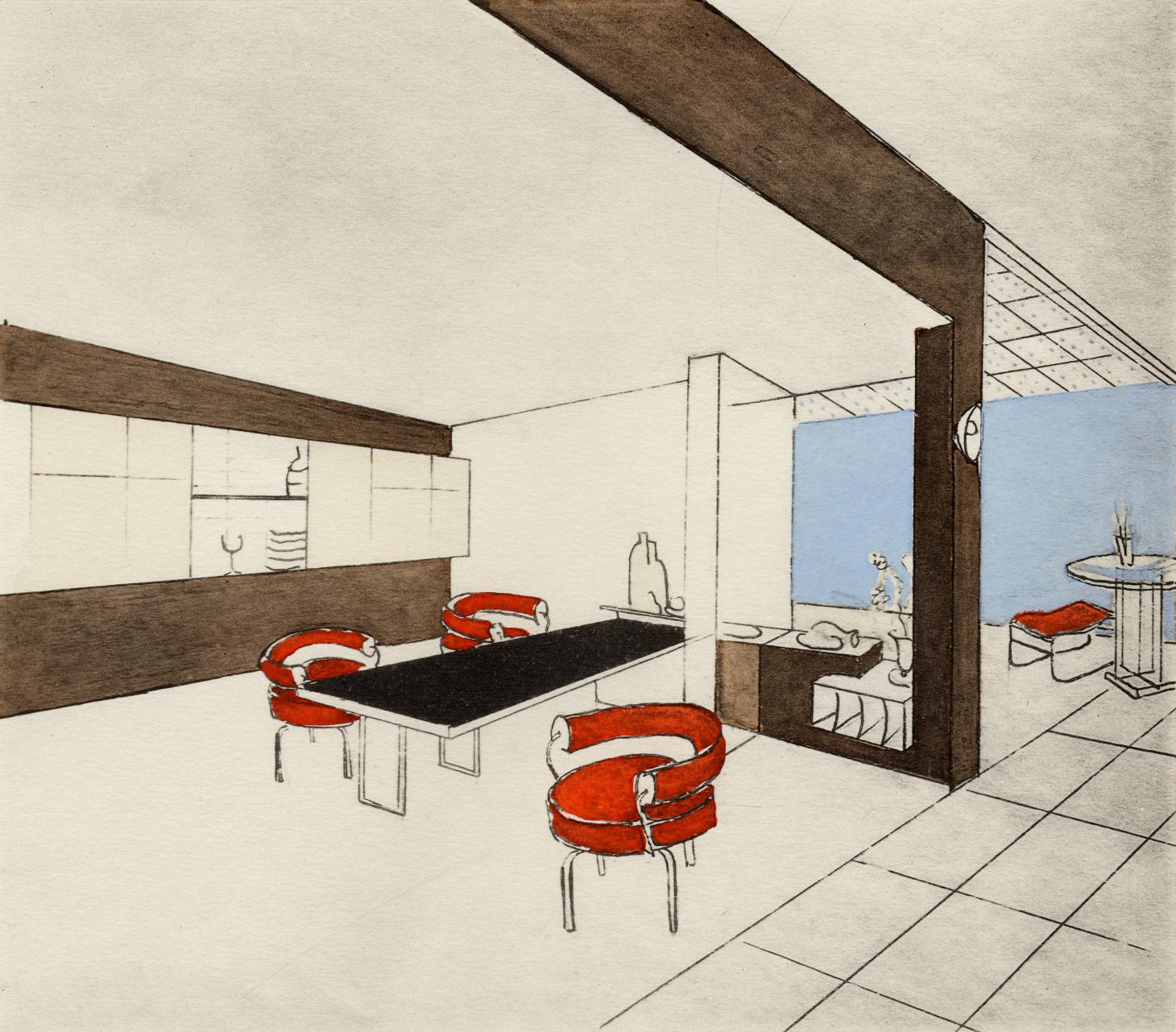
Charlotte Perriand, perspective drawing of the dining room in the Place Saint-Sulpice apartment-studio, Paris, 1928
Perriand was born in Paris in 1903, and studied furniture design at the École de l'Union Centrale des Arts Décoratifs. She came to prominence soon after graduating in 1925, with projects such as the 1927 ‘Bar sous le toit’ (Bar under the roof) created for her own apartment-studio in Paris’ Saint-Sulpice. This minimalist and functional apartment space that she designed for her life and work was faithfully reproduced at the exhibition’s entrance.
Receive our daily digest of inspiration, escapism and design stories from around the world direct to your inbox.
Early examples of modular metal furniture, as well as the sketches, models and plans behind the designs formed the core of ‘The Machine Age’. Several vignettes recreated Perriand’s interiors, demonstrating the modernity of her aesthetic and approach to space and living. It was during this time that she started working with Le Corbusier and Pierre Jeanneret, a decade-long collaboration that resulted in furniture pieces such as the 1928 ‘Chaise longue basculante’ or the ‘Fauteil grand confort’ from the same year, as well as several interiors, including an installation proposing single-room living at the Salon d’Automne in 1929.

Recreation of the bedroom and bathroom in ‘Un equipement intérieur d’une habitation’ (Equipment for a dwelling), presented at the Salon d’Automne, 1929 (Cassina)
In the 1930s, Perriand’s interest shifted from metal furniture and industrialised production towards nature, and her artistic work took a turn in this direction. Brilliantly exemplified through ‘Nature and the Synthesis of the Arts’, this shift included organic furniture forms in wood and leather, inspired by personal collections of found natural objects such as rocks, sticks and fossils. The exhibition included black and white photography and experimental sketches; mixed with furniture from the time, these give a sense of how these inspirations were translated through Perriand’s sensibility.

Charlotte Perriand, Gaston Regairaz (architects), Guy Rey-Millet/AAM (site manager), La Cascade residence, Arc 1600, 1967-1969
‘Modular Designs for Modern Living’ forms a synthesis of Perriand’s trajectory through modernity, and shows her work in modular furnishings, interior design and architecture. She strived to create affordable and adaptable interiors, and some of her best known furniture works include bookcase designs originally conceived for student dormitories – a fitting example of democratic design, featuring a simple, modular construction in wood and plastic. The exhibition culminates with the legendary work for the French ski resort Les Arcs in 1968, with a life-sized model and a film that helps visitors immerse themselves in her pragmatic design thinking.
A Perriand interior remains kind of ideal, a harmony of contrasts and disciplines that is difficult to replicate
Justin McGuirk
Perhaps most poetically, the show’s last item on display demonstrates Perriand’s curiosity and humour. It’s a vase she had bought in Brazil in the 1960s, made from an everyday plastic bottle that, she had said, captured the essence of good design to be resourceful, intelligent and infused with humanity.
‘The last time Perriand had an exhibition at the Design Museum, in 1996, she was concerned at first that she was being presented as a furniture designer,’ says McGuirk. ‘Twenty-five years later, there is no risk of any misunderstanding. Here, she is presented as a synthesiser, a collaborator, an integrator. A Perriand interior remains kind of ideal, a harmony of contrasts and disciplines that is difficult to replicate. And it is this ideal that she offered as a framework to those who wished to live a modern life, like her own.’

At the exhibiton entrance, a recreation of Perriand’s Place Saint-Sulpice apartment-studio from 1927

Cantilever bamboo chair and cross-based bamboo armchair, 1940

Charlotte Perriand, bookcase for the Maison du Mexique, 1952

‘Travail et Sport’ (Work and Sport) model,1927-28. With this project, created for the magazine Répertoire du goût moderne, Perriand imagined a multifunctional space for work, relaxation and exercise, drawing from her own interest in sport and featuring materials such as steel and reinforced concrete

Exhibition visitors are invited to try Perriand furniture in this display created in collaboration with Cassina, and including the ‘Chaise longue basculante’, 1928 (Cassina)

Series of studies for the tubular steel chairs,1927-29, by Le Corbusier, Pierre Jeanneret and Charlotte Perriand, and Thonet’s brochure presenting the range, May 1931 (Archives Charlotte Perriand)
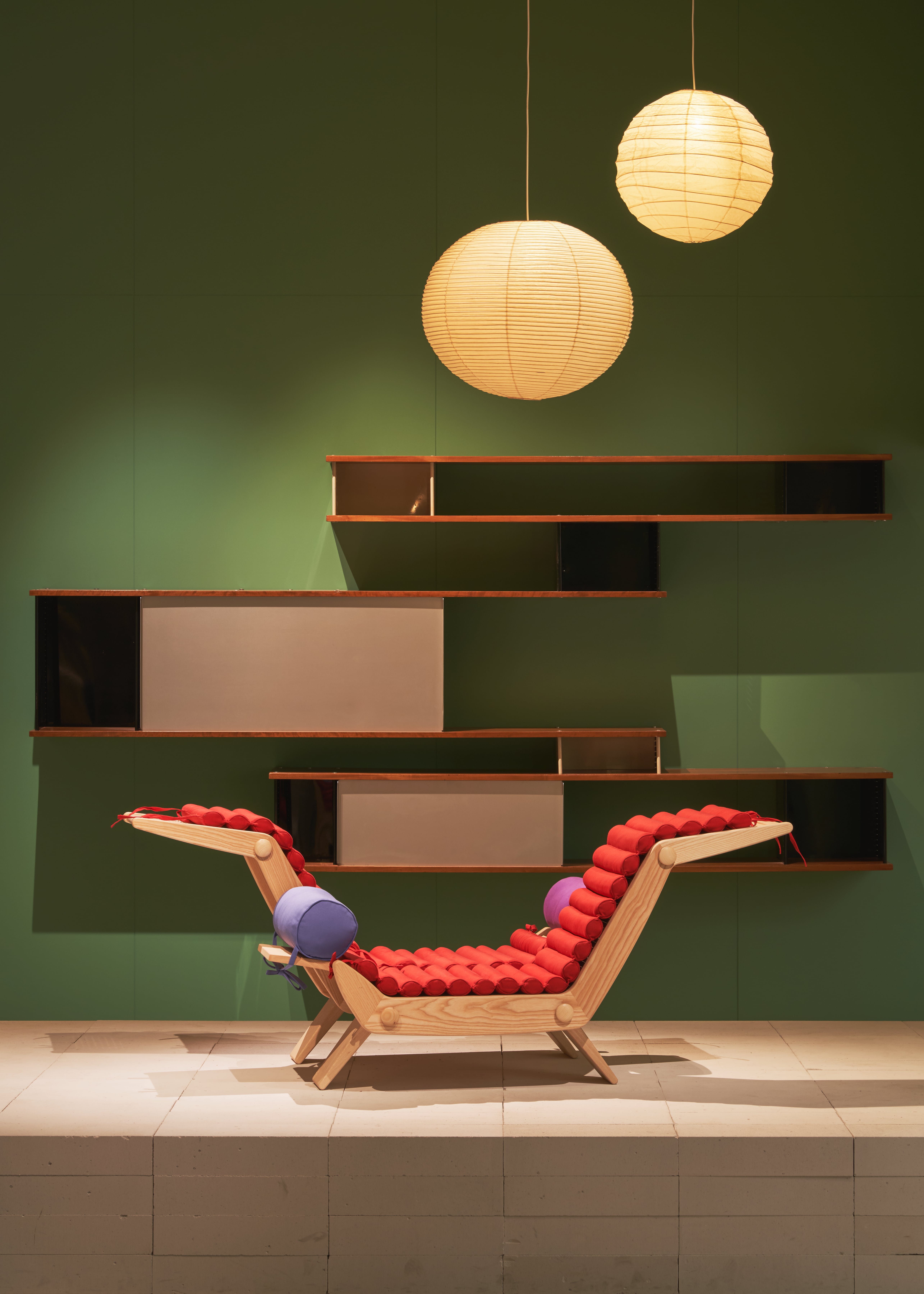
Charlotte Perriand’s ‘Double chaise longue’, 1952 (reconstruction by Cassina), with two ‘Akari’ pendant lamps, c1958, by Isamu Noguchi, and ‘Nuage’ (Cloud) bookshelf, Steph Simon edition, c1958, by Charlotte Perriand (both Laffanour-Galerie Downtown, Paris)
INFORMATION
‘Charlotte Perriand: The Modern Life' is at the Design Museum, London, 19 June-5 September 2021
ADDRESS
224-238 Kensington High Street
London W8 6AG
Rosa Bertoli was born in Udine, Italy, and now lives in London. Since 2014, she has been the Design Editor of Wallpaper*, where she oversees design content for the print and online editions, as well as special editorial projects. Through her role at Wallpaper*, she has written extensively about all areas of design. Rosa has been speaker and moderator for various design talks and conferences including London Craft Week, Maison & Objet, The Italian Cultural Institute (London), Clippings, Zaha Hadid Design, Kartell and Frieze Art Fair. Rosa has been on judging panels for the Chart Architecture Award, the Dutch Design Awards and the DesignGuild Marks. She has written for numerous English and Italian language publications, and worked as a content and communication consultant for fashion and design brands.
-
 Mexico's Office of Urban Resilience creates projects that cities can learn from
Mexico's Office of Urban Resilience creates projects that cities can learn fromAt Office of Urban Resilience, the team believes that ‘architecture should be more than designing objects. It can be a tool for generating knowledge’
-
 ‘I want to bring anxiety to the surface': Shannon Cartier Lucy on her unsettling works
‘I want to bring anxiety to the surface': Shannon Cartier Lucy on her unsettling worksIn an exhibition at Soft Opening, London, Shannon Cartier Lucy revisits childhood memories
-
 What one writer learnt in 2025 through exploring the ‘intimate, familiar’ wardrobes of ten friends
What one writer learnt in 2025 through exploring the ‘intimate, familiar’ wardrobes of ten friendsInspired by artist Sophie Calle, Colleen Kelsey’s ‘Wearing It Out’ sees the writer ask ten friends to tell the stories behind their most precious garments – from a wedding dress ordered on a whim to a pair of Prada Mary Janes
-
 Step inside Faye Toogood's intimate cabinet of curiosities at PAD London
Step inside Faye Toogood's intimate cabinet of curiosities at PAD LondonFor PAD London 2025, (until 19 October) Faye Toogood presents The Magpie’s Nest with Friedman Benda
-
 Rajan Bijlani opens his Primrose Hill home for ‘Electric Kiln’
Rajan Bijlani opens his Primrose Hill home for ‘Electric Kiln’In his London home – once the studio of ceramicist Emmanuel Cooper – Rajan Bijlani stages ‘Electric Kiln’, uniting Frank Auerbach, Lucie Rie and Cooper in an intimate reflection on the creative spirit of postwar London
-
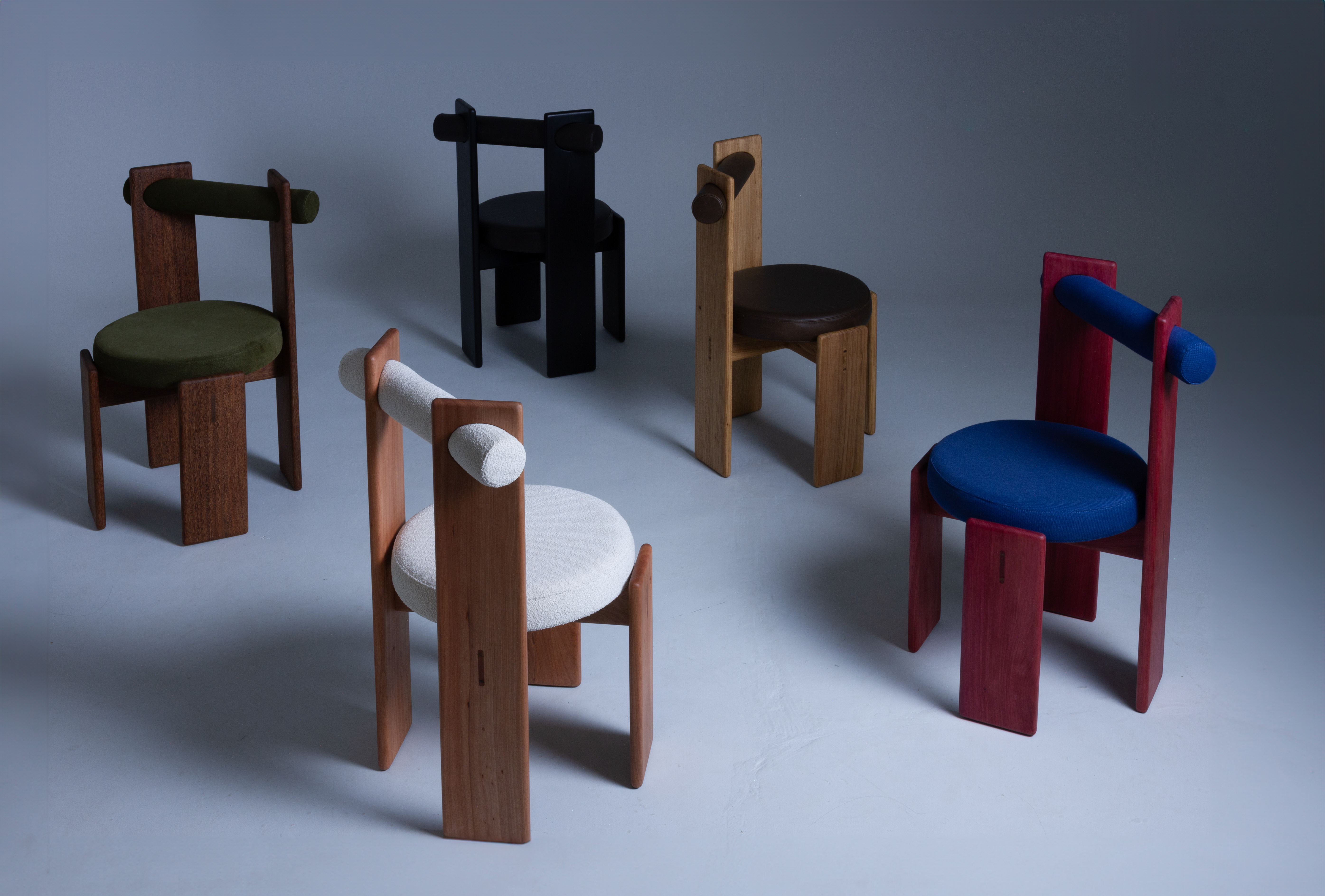 These are the design exhibitions to see in London during Frieze Week
These are the design exhibitions to see in London during Frieze WeekWe round up the best design events happening in London in conjunction with Frieze Week 2025: discover collectible design and craft across the city
-
 Norman Foster and nine other architects design birdhouses for charity – you can bid
Norman Foster and nine other architects design birdhouses for charity – you can bid‘Architects for the Birds’ is spearheaded by Norman Foster and the Tessa Jowell Foundation to raise funds to improve treatment for brain cancer. Ten architect-designed birdhouses will go up for auction
-
 The David Collins Foundation celebrates creativity in all its forms at London Design Festival
The David Collins Foundation celebrates creativity in all its forms at London Design FestivalThe David Collins Foundation presents ‘Convergence’ at the Lavery during London Design Festival 2025 (on view until 19 September), featuring works from the Arts Foundation’s annual Futures Awards
-
 Lee Broom’s brutalist-inspired ‘Beacon’ will light up London as Big Ben strikes the hour
Lee Broom’s brutalist-inspired ‘Beacon’ will light up London as Big Ben strikes the hourSet to pulse through London Design Festival 2025 (13-22 September) and beyond, the British industrial designer’s sculptural light installation on the South Bank draws on its surroundings
-
 Yuri Suzuki turns sound into architecture at Camden Arts Projects
Yuri Suzuki turns sound into architecture at Camden Arts ProjectsThe sound designer unveils ‘Utooto’, an interactive installation at London’s Camden Arts Projects (until 5 October 2025), in which visitors collaboratively build a sonic piece of architecture
-
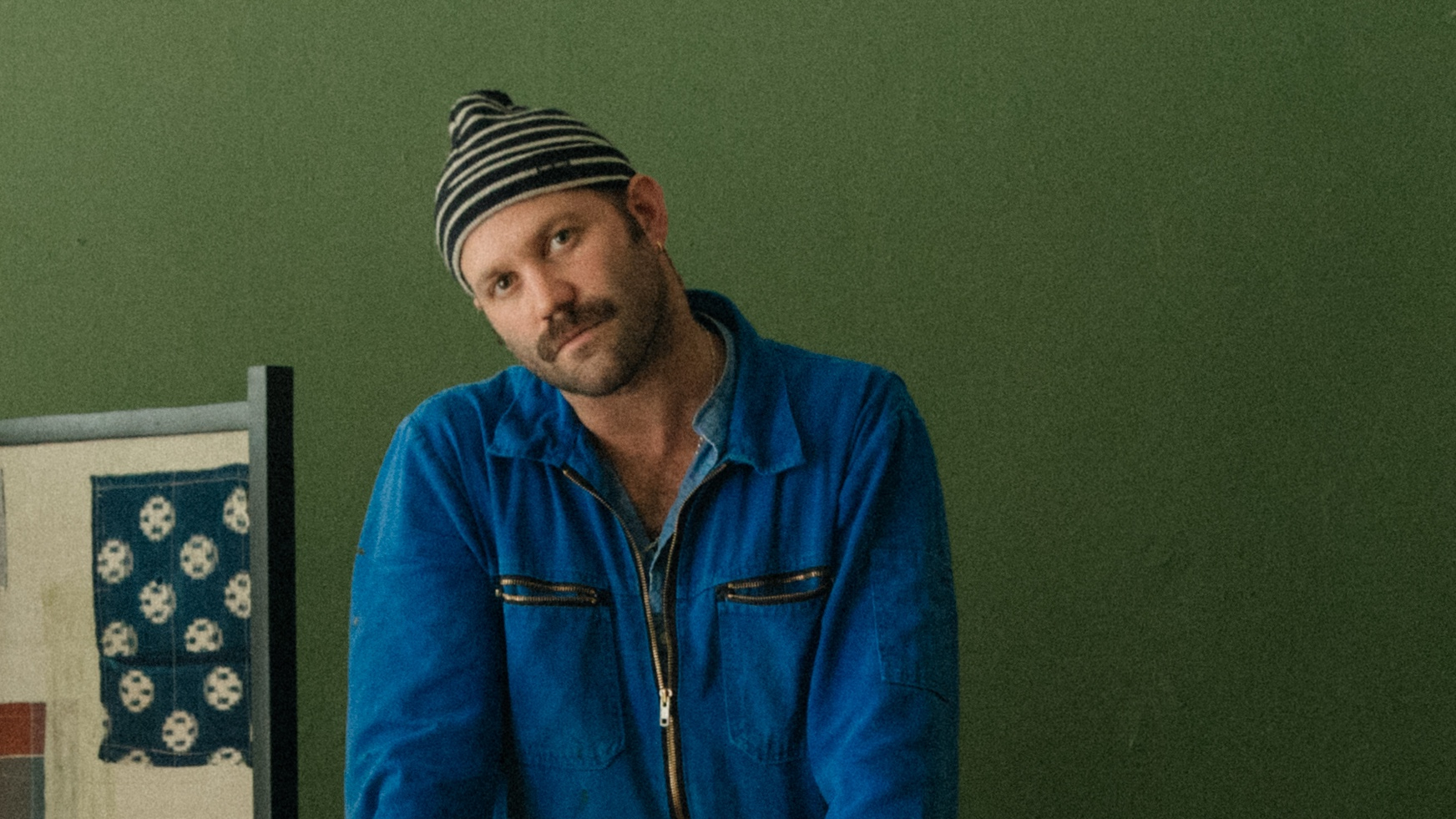 Alex Tieghi-Walker unveils his plans for Brompton Design District 2025
Alex Tieghi-Walker unveils his plans for Brompton Design District 2025Ahead of London Design Festival 2025, we catch up with New York gallerist Alex Tieghi-Walker about his appointment as curator of the Brompton Design District programme